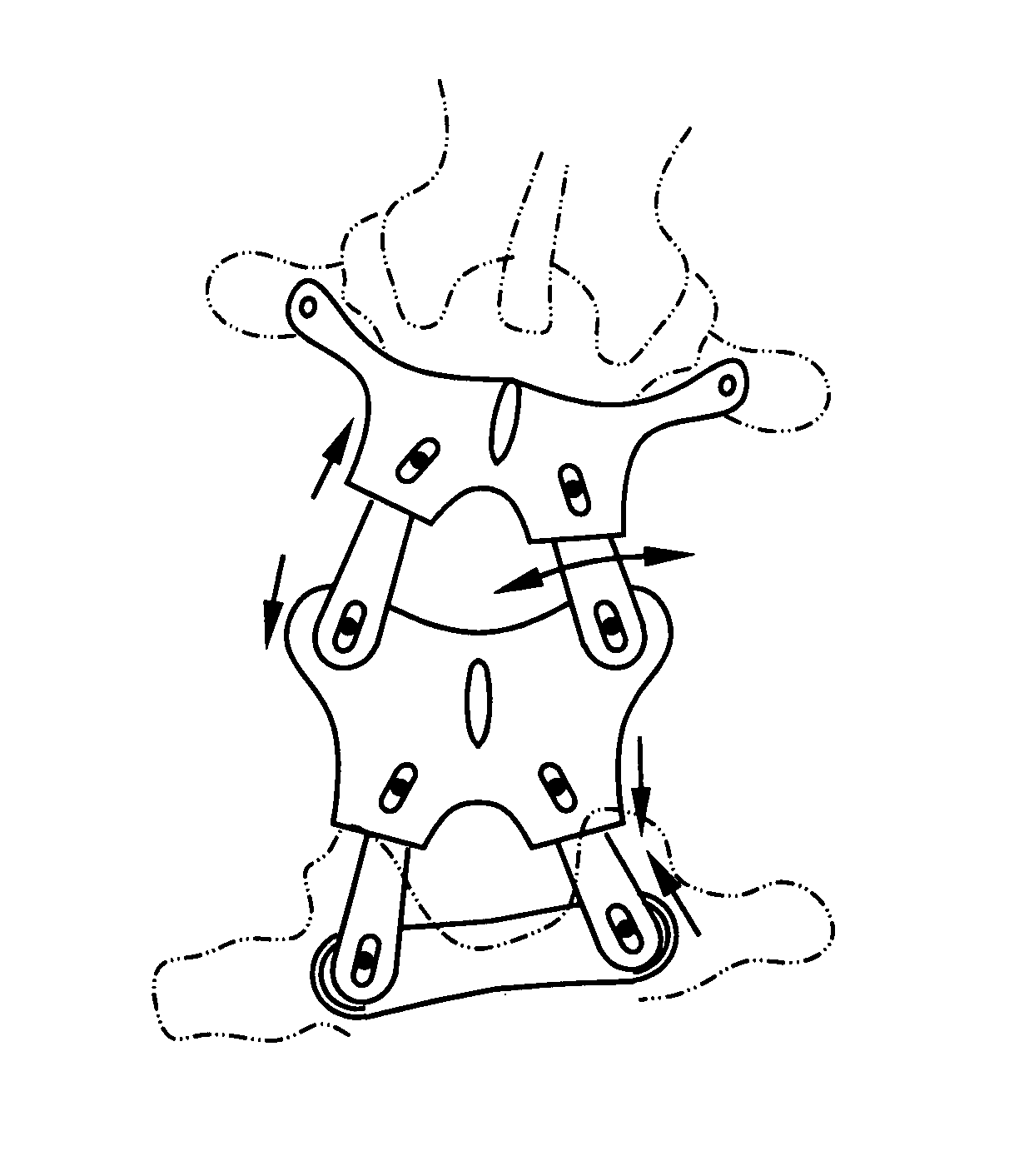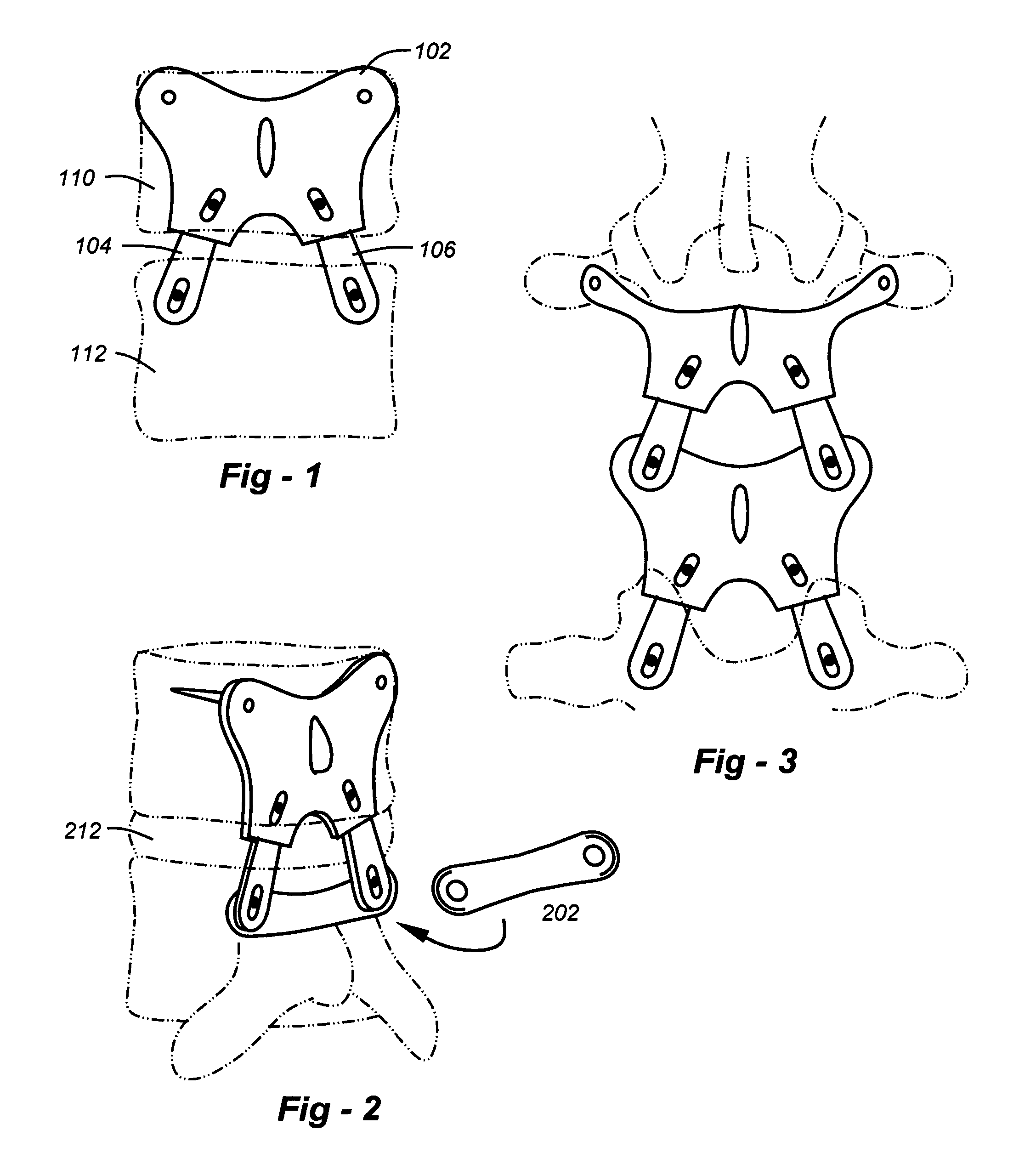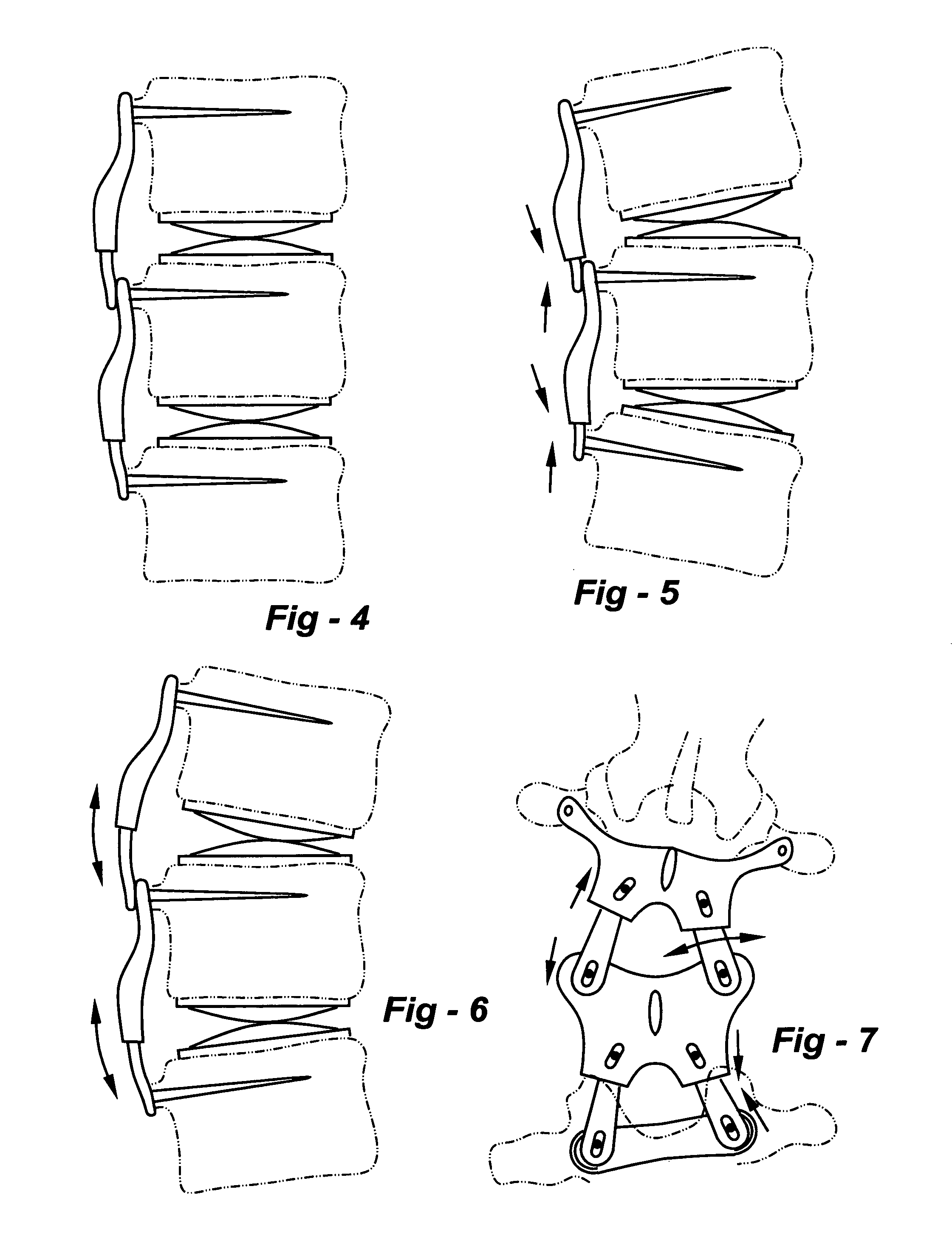Posterior spinal reconstruction system
a spinal cord and posterior technology, applied in the field of spinal cord reconstruction, can solve problems such as limiting mobility, and achieve the effect of combining flexibility and stability
- Summary
- Abstract
- Description
- Claims
- Application Information
AI Technical Summary
Benefits of technology
Problems solved by technology
Method used
Image
Examples
Embodiment Construction
[0026]FIG. 1 is a drawing which shows the way in which a superior facet complex (SFC) 102 and inferior facet gliding arms (IFGAs) 104, 106 are positioned on adjacent vertebrae 110, 112. At multiple levels, the IFGAs from an upper level may be attached through the upper points of a corresponding SFC. However, a link 202 may be provided for the lowest point SFC, as shown in FIG. 2. A disk is shown at 212.
[0027]The SFC is generally fixed to the superior pedicles of the anatomic vertebrae-disc-vertebrae (VDV) complex, with appropriate contours relative to the joint surface to allow for gliding of the inferior facet. As shown in FIG. 3, a separate superior pedicle anchoring design 302 may be used to accommodate the most proximal existing inferior / superior facet complex. The use of a central pedicle fixation anchor provides an attachment post for the inferior facet to interface with and use a gliding track and stop. Other arrangements may be accommodated, including ball and gliding socket...
PUM
 Login to View More
Login to View More Abstract
Description
Claims
Application Information
 Login to View More
Login to View More - R&D
- Intellectual Property
- Life Sciences
- Materials
- Tech Scout
- Unparalleled Data Quality
- Higher Quality Content
- 60% Fewer Hallucinations
Browse by: Latest US Patents, China's latest patents, Technical Efficacy Thesaurus, Application Domain, Technology Topic, Popular Technical Reports.
© 2025 PatSnap. All rights reserved.Legal|Privacy policy|Modern Slavery Act Transparency Statement|Sitemap|About US| Contact US: help@patsnap.com



